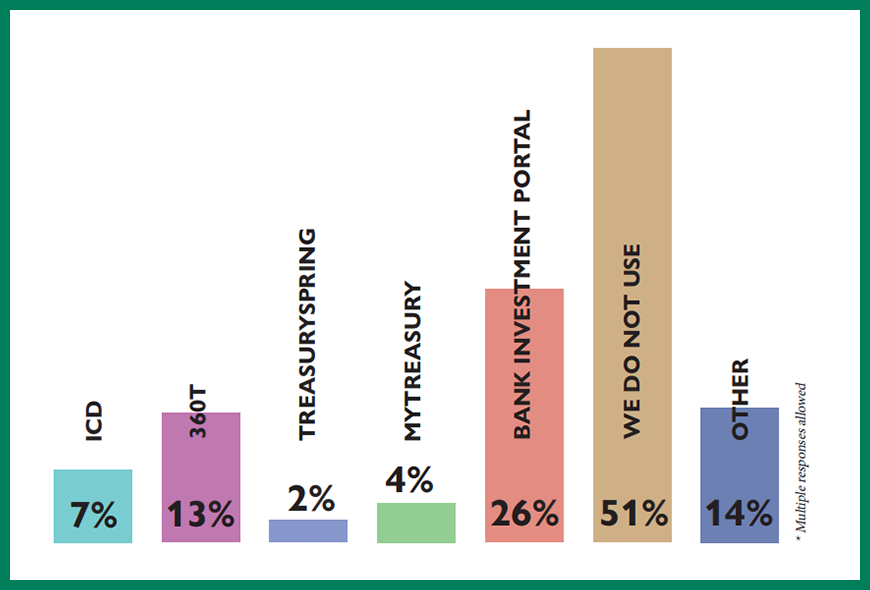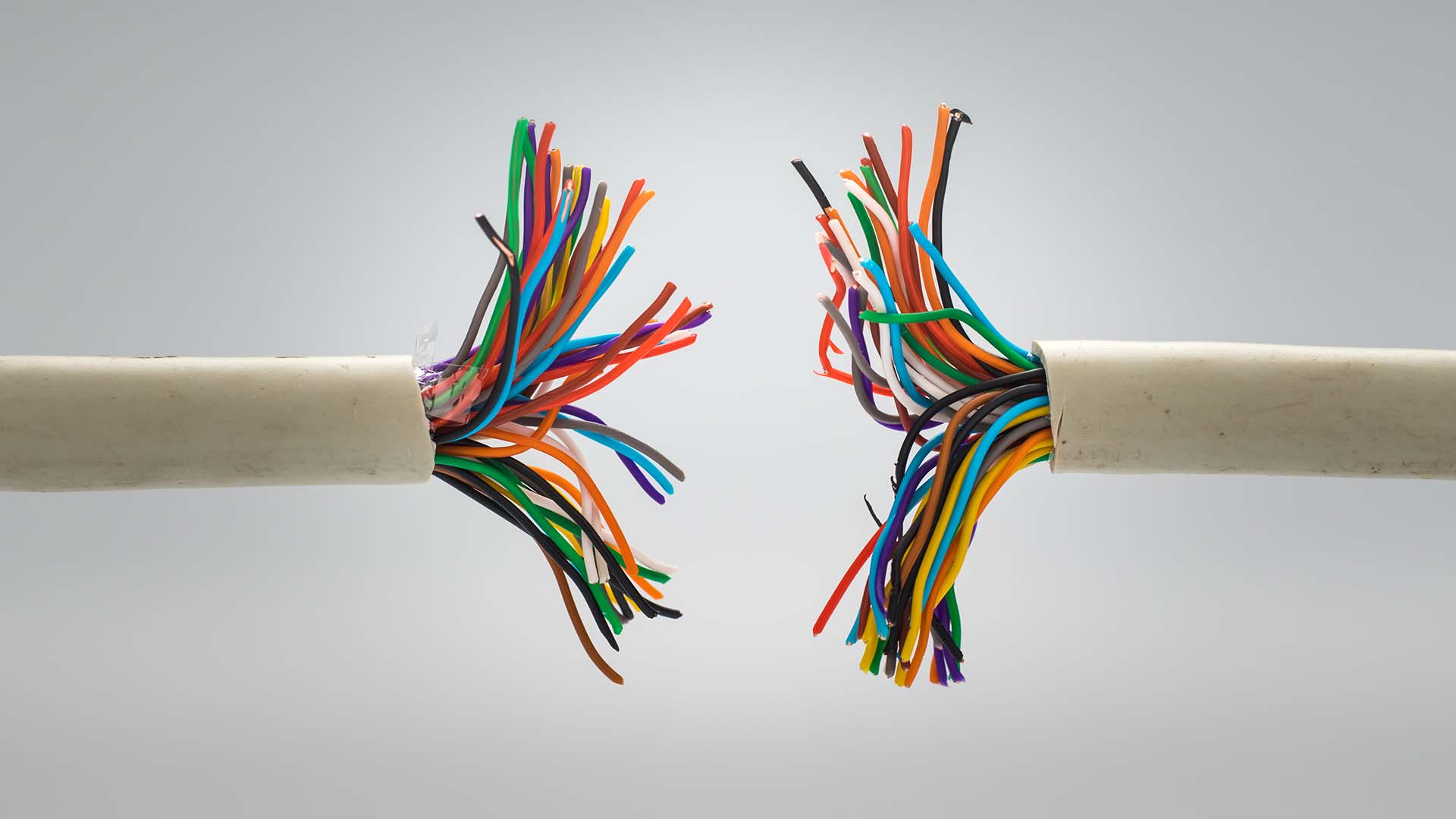
Corporate treasurers play a vital role in a company’s success. They manage cash flow, mitigate risk, and help drive long-term value — all while often facing an increasingly uncertain environment, tight deadlines, and growing pressure to do more with less. Effective time management is crucial. Yet, despite the availability of integrated, time-saving technologies, many corporate treasurers still rely on manual processes and outdated tools like spreadsheets and basic portals. Why, in a time of automated and integrated technology are many treasurers hesitant to make the shift to the latest technology?
What it is
Despite the availability of integrated, time-saving technologies, many corporate treasurers still rely on manual processes and outdated tools like spreadsheets and basic portals.
Why it matters
Treasury modernisation requires investment, and while upgrading has a price tag, a greater cost is likely incurred by delaying necessary improvements.
Where it’s going
By embracing a strategic, phased approach to modernisation, treasurers can be empowered to do what they do best: mitigate against risks, manage day-to-day business obligations, and develop long-term financial strategies.
A 2024 survey of treasurers, conducted in partnership with Treasury Management International1, revealed key obstacles to technology adoption:
- Cost: 21% of treasurers cite budget constraints. However, industry trends show that automation offers long-term savings that justify upfront costs.
- Limited resources: 11% mention limited staff or time constraints. Ironically, the very tools they hesitate to adopt are designed to alleviate these constraints.
- Integration challenges: 35% are already juggling multiple disconnected systems, making the idea of introducing new tools feel like an added burden. Yet, modern treasury platforms are built for seamless integration, reducing complexity instead of adding to it.
- Reluctance to change: Surprisingly, 50% of respondents still avoid investment portals, preferring traditional and more manual methods. This resistance to change leaves potential gains on the table and keeps treasury functions stuck in the past, possibly putting them years behind competitors.
These findings highlight a growing disconnect. The time to modernise is now.
EXHIBIT 1: ABOUT 50% OF TREASURERS SURVEYED DON’T USE INVESTMENT PORTALS
Survey respondents were asked: “What investment portals does your company currently use?”
Survey Answers Highlight Lack of Adoption

Making Technology Work for Treasury Teams
Modernising treasury operations may seem overwhelming, but a structured approach delivers quick wins and builds momentum. By prioritising the most pressing challenges first, treasurers and cash managers can demonstrate the immediate value of technology and gain buy-in. The right technology, including application programming interfaces (APIs) and artificial intelligence (AI), along with AI subsets like machine learning and natural language processing (NLP), can support this first step by automating processes, improving accuracy, and enhancing risk management.
APIs: The Connectivity Powerhouse
Manual processes, siloed systems, and a lack of real-time visibility into liquidity creates unnecessary hurdles. APIs break down these barriers by automating data flows and delivering up-to-date financial insights. Many treasury management systems (TMS) and enterprise resource planning (ERP) platforms already offer API capabilities, making integration easier with minimal disruption. Liquidity professionals can work with existing vendors or IT teams to make sure they’re getting the most out of their current technology and explore new solutions.
How APIs can modernise treasury
Reduces costs and improves efficiency
APIs automate data transfers from banks directly into TMS, eliminating manual reconciliations and spreadsheet updates. This automation reduces tedious tasks and unintended errors, lowers labor costs (including potential overtime), and frees up staff time for strategic activities.
Optimises workflows and risk management
APIs integrate management tools and enable real-time cash flow forecasting, allowing proactive risk identification. They also connect previously siloed systems to create a unified financial view, which streamlines operations and reduces IT costs.
Strengthens treasury infrastructure
Treasurers can choose from a variety of API-enabled solutions, from fully integrated TMS and ERP platforms to specialised API management tools. Collaborating with experts to explore options can help them build a scalable, cost-effective treasury infrastructure.
While APIs have improved treasury operations, technology is advancing further. Intelligent automation, including AI, machine learning, and NLP, moves treasury functions beyond reactive reporting toward predictive insights.
Intelligent Automation: AI, Machine Learning, and NLP
APIs deliver the data, but AI, machine learning, and NLP turn the data into actionable insights. Many modern treasury systems now embed these technologies, allowing liquidity managers to anticipate risks and refine forecasts without overhauling their entire infrastructure.
AI: Faster decision-making
AI analyses large data sets to detect patterns, flag inconsistencies, and assess potential risks in real time, which allows for faster responses to unexpected market shifts and more informed decision-making.
Machine learning: Sharper, more adaptive forecasts
Machine learning strengthens AI by improving its predictions over time. It analyses historical and real-time financial patterns to refine cash flow forecasts, detect liquidity risks earlier, and adapt treasury strategies as market conditions evolve.
NLP: Automated document processing
While AI and machine learning focus on numbers and trends, NLP accelerates document processing. It scans contracts, regulatory filings, emails, and market commentary in minutes instead of hours, pinpointing anomalies and critical details faster, which reduces manual errors and simplifies compliance.
A Practical Guide to Treasury Technology Adoption
Treasury modernisation requires investment, and while upgrading has a price tag, a greater cost is likely incurred by delaying necessary improvements. Every delay means lost opportunities to automate, enhance forecasting, and improve risk management. While change can feel disruptive, modernisation doesn’t have to be overwhelming. Liquidity teams can leverage existing TMS or ERP vendors, industry associations, or internal IT departments to get started. These partnerships can help managers navigate the process, avoid costly missteps, and confidently implement the best solutions.
A phased approach allows treasury departments to integrate new technology at a manageable pace, ensuring efficient use of resources while minimising disruption and maximising benefits. The following framework outlines key steps for a smooth transition.
Four Phases of Treasury Modernisation
Phase 1: Strategic assessment
Evaluate current operations, identifying inefficiencies, pain points, and areas for improvement. Gather input from consultants, technology partners, and internal stakeholders.
Key questions include:
- Which tasks are the most time-consuming or error-prone?
- What are the biggest risks or vulnerabilities?
- What obstacles hinder strategic objectives?
- Which data or insights are missing?
Phase 2: Explore solutions
Research your options and ask consultants and partners for recommendations, making sure solutions align with immediate needs and long-term goals.
Key considerations include:
- Functionality: Does the solution offer the features we need?
- Integration: Will it connect seamlessly with our existing systems (TMS, ERP, banking platforms)?
- Scalability: Can the solution grow with our future needs?
- Vendor support: Does the vendor provide comprehensive training, support, and ongoing maintenance?
Phase 3: Empower the team
Technology is only as effective as the people using it. Successful adoption requires leadership buy-in, hands-on training, and a clear understanding of how technology improves workflows. A strong change management plan will help teams embrace the transition. Managers should emphasise the benefits of the new technology and reassure the team they will have the support they need.
A successful change management strategy includes:
- Hands-on training programs to build confidence.
- Regular feedback sessions to address concerns early.
- Clear communication on how new technology improves workflows.
- Ongoing support mechanisms to improve long-term success.
Phase 4: Evaluate and optimise
Technology integration is an ongoing journey of continuous improvement. Regular evaluations and system optimisations keeps the system aligned with company goals and objectives.
How Modern Treasury Systems Can Help Strengthen Security and Compliance
Modern treasury systems are built with security and compliance in mind, offering advanced protections to safeguard financial data and integrate regulatory compliance.
Critical security features include:
- Multi-factor authorisation (MFA): Adds an extra layer of protection by requiring multiple forms of verification to access a system.
- Advanced encryption protocols: Converts data into a secure format to protect it from unauthorised access.
- Real-time threat detection: Identifies and mitigates security risks before they become breaches.
- Role-based access controls: Restricts system access based on user roles and permissions.
- Firewalls: Blocks malicious activity and unwanted intrusions
Beyond security, modern treasury systems simplify regulatory compliance with:
- Automated reporting
- Built-in rule engines
- Comprehensive audit trails
Conclusion: The Future of Treasury is Now
The message is clear: modern treasury technology is no longer a luxury, but a necessity. By embracing a strategic, phased approach to modernisation, treasurers and other liquidity professionals can be empowered to do what they do best: mitigate against risks, manage day-to-day business obligations, and develop long-term financial strategies. And in today’s dynamic market, these capabilities are more critical than ever before.
Glossary
Application programming interfaces (APIs)
APIs, or application programming interfaces, are a set of tools that act as a bridge between different software systems so they can communicate with each other.
Artificial intelligence (AI)
AI is a branch of computer science that enables computers to do human-like tasks, such as learning, problem-solving, pattern recognition, and decision-making. AI systems can use machine learning, natural language processing, and computer vision to analyse data, adapt to new information, and automate complex processes.
Enterprise resource planning (ERP)
Enterprise resource planning software manages core business processes, such as HR or finance.
Intelligent automation
Intelligent automation is the combination of AI, integration, and automation that can be used to optimise business operations.
Machine learning
Machine learning is a subset of AI that enables systems to learn from data, identify patterns, and improve performance over time without being explicitly programmed.
NLP
Natural language processing (NLP) is a subset of AI (which often incorporates machine learning techniques) that focuses on enabling computers to understand, interpret, and generate human language.
Silos
Silos are isolated systems that prevent seamless information sharing.
Treasury management systems (TMS)
A treasury management system is a software solution that helps organisations manage treasury operations.
1Treasury Management International (TMI) and Northern Trust Asset Management (NTAM) Global Liquidity Survey 2024
2As of December 31, 2024
Northern Trust Asset Management (NTAM) is composed of Northern Trust Investments, Inc., Northern Trust Global Investments Limited, Northern Trust Fund Managers (Ireland) Limited, Northern Trust Global Investments Japan, K.K., NT Global Advisors, Inc., 50 South Capital Advisors, LLC, Northern Trust Asset Management Australia Pty Ltd, and investment personnel of The Northern Trust Company of Hong Kong Limited and The Northern Trust Company.
Issued in the United Kingdom by Northern Trust Global Investments Limited, issued in the European Economic Association (“EEA”) by Northern Trust Fund Managers (Ireland) Limited, issued in Australia by Northern Trust Asset Management (Australia) Limited (ACN 648 476 019) which holds an Australian Financial Services Licence (License Number: 529895) and is regulated by the Australian Securities and Investments Commission (ASIC), and issued in Hong Kong by The Northern Trust Company of Hong Kong Limited which is regulated by the Hong Kong Securities and Futures Commission.
For Asia-Pacific (APAC) and Europe, Middle East and Africa (EMEA) markets, this information is directed to institutional, professional and wholesale clients or investors only and should not be relied upon by retail clients or investors. This document may not be edited, altered, revised, paraphrased, or otherwise modified without the prior written permission of NTAM. The information is not intended for distribution or use by any person in any jurisdiction where such distribution would be contrary to local law or regulation. NTAM may have positions in and may effect transactions in the markets, contracts and related investments different than described in this information. This information is obtained from sources believed to be reliable, its accuracy and completeness are not guaranteed, and is subject to change. Information does not constitute a recommendation of any investment strategy, is not intended as investment advice and does not take into account all the circumstances of each investor.
This report is provided for informational purposes only and is not intended to be, and should not be construed as, an offer, solicitation or recommendation with respect to any transaction and should not be treated as legal advice, investment advice or tax advice. Recipients should not rely upon this information as a substitute for obtaining specific legal or tax advice from their own professional legal or tax advisors. References to specific securities and their issuers are for illustrative purposes only and are not intended and should not be interpreted as recommendations to purchase or sell such securities. Indices and trademarks are the property of their respective owners. Information is subject to change based on market or other conditions.
All securities investing and trading activities risk the loss of capital. Each portfolio is subject to substantial risks including market risks, strategy risks, advisor risk, and risks with respect to its investment in other structures. There can be no assurance that any portfolio investment objectives will be achieved, or that any investment will achieve profits or avoid incurring substantial losses. No investment strategy or risk management technique can guarantee returns or eliminate risk in any market environment. Risk controls and models do not promise any level of performance or guarantee against loss of principal. Any discussion of risk management is intended to describe NTAM’s efforts to monitor and manage risk but does not imply low risk.
Capital Market Assumption (CMA) model expected returns do not show actual performance and are for illustrative purposes only. They do not reflect actual trading, liquidity constraints, fees, expenses, taxes and other factors that could impact the future returns. Stated return expectations may differ from an investor’s actual result. The assumptions, views, techniques and forecasts noted are subject to change without notice.
CMA model expected returns are based on IPC forecasted returns and reflect Northern Trust’s Investment Policy Committee’s forward-looking annual capital market assumptions. The Capital Market Assumptions Working Group, a subset of IPC members, publishes its assumptions as a white paper report. Forecasted returns are annual returns (geometric basis). The model cannot account for the impact that economic, market and other factors may have on the implementation and ongoing management of an actual investment strategy. Model outcomes do not reflect actual trading, liquidity constraints, fees, expenses, taxes and other factors that could impact future returns. The model assumptions are passive only. References to expected returns are not promises or even estimates of actual returns an investor may achieve. The assumption, views, techniques and estimates set out are provided for illustrative purposes only. Forecasts of financial market trends that are based on current market conditions constitute the CMA Working Group judgment and are subject to change without notice. “Expected” or “alpha” return estimates are subject to uncertainty and error. The ability to achieve similar outcomes is subject to risk factors over which Northern Trust may have no or limited control.
Past performance is not a guarantee of future results. Performance returns and the principal value of an investment will fluctuate. Performance returns contained herein are subject to revision by NTAM. Comparative indices shown are provided as an indication of the performance of a particular segment of the capital markets and/or alternative strategies in general. Index performance returns do not reflect any management fees, transaction costs or expenses. It is not possible to invest directly in any index. Net performance returns are reduced by investment management fees and other expenses relating to the management of the account. Gross performance returns contained herein include reinvestment of dividends and other earnings, transaction costs, and all fees and expenses other than investment management fees, unless indicated otherwise. For U.S. NTI prospects or clients, please refer to Part 2a of the Form ADV or consult an NTI representative for additional information on fees.
Forward-looking statements and assumptions are NTAM’s current estimates or expectations of future events or future results based upon proprietary research and should not be construed as an estimate or promise of results that a portfolio may achieve. Actual results could differ materially from the results indicated by this information.
NOT FDIC INSURED | MAY LOSE VALUE | NO BANK GUARANTEE
© 2025 Northern Trust Corporation. Head Office: 50 South La Salle Street, Chicago, Illinois 60603 U.S.A
P-030625-4297575-030626



